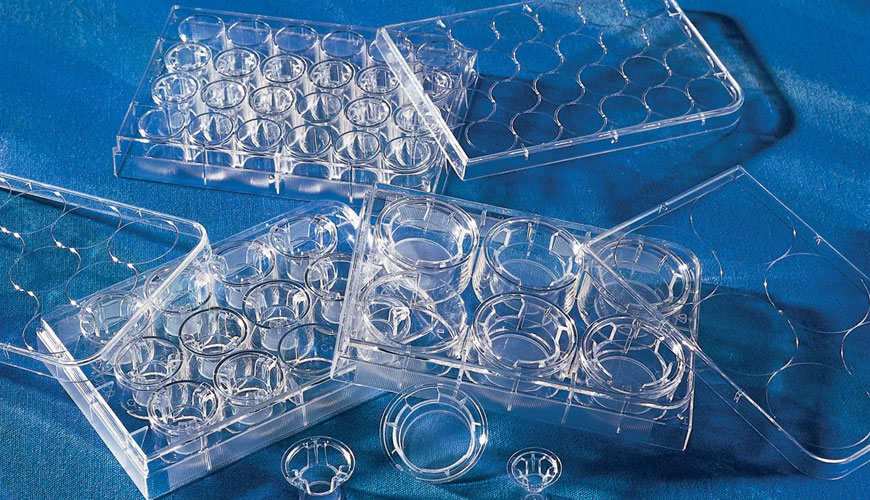

EUROLAB laboratory provides testing and compliance services within the scope of ISO 1663 standard. The ISO 1663 standard, developed by the International Standards Organization (ISO), specifies the method for determining the water vapor transmission rate, water vapor permeability, water vapor permeability and water vapor diffusion resistance index for rigid cellular plastics.

The scope of this method allows the testing of rigid cellular materials with thicknesses from 10 mm and which may contain natural veneers as an integral part of the material or veneers bonded from a different material.
Three different sets of temperature and humidity conditions are provided as follows:
Results obtained with this method are suitable for design purposes and for inclusion in production control and product specifications. The method is suitable for materials with water vapor transmission rates in the range of 3ng/(m².s) to 200 ng/(m².s).
The test sample is sealed into the open mouth of a test vessel containing a desiccant. The assembly is then placed in a temperature and humidity controlled atmosphere. Periodic weighings of the apparatus are made to determine the rate of water vapor transmission from the sample to the dryer.
The sample should be representative of the material. It may include the natural leather that forms part of the material or the veneers attached to it. Some cellular plastics have a density significantly different from that of the core material. If the permeability of the material is intended to be determined, the sample should be homogeneous and tested without surface and coating.
At least five samples will be tested. When it is suspected that the material to be tested is anisotropic, the test specimens should be cut with the parallel faces perpendicular to the direction of steam flow through the product in the intended use.
When the material is faced with natural veneers or bonded veneers that are different for the two sides, the test specimens should be tested with the steam flow in the same direction as in the intended use. If the direction of steam flow in the intended use is unknown, a pair of sample sets should be prepared so that tests can be performed and reported for each steam flow direction.
Among the services provided by our organization within the framework of material testing services, there are also ISO 1668 standard tests. Do not hesitate to contact our laboratory EUROLAB for your testing and certification requests.
To get an appointment, to get more detailed information or to request an evaluation, you can ask us to fill in our form and reach you.